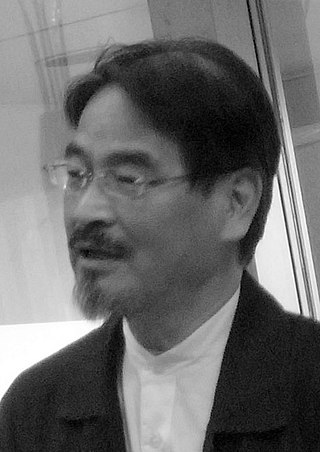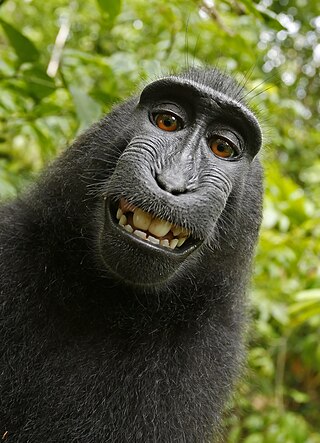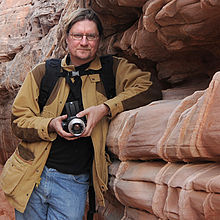
Fred Hultstrand was a professional photographer whose work helped document life in the U.S. state of North Dakota in the early 20th century.

The ArQuives: Canada's LGBTQ2+ Archives, formerly known as the Canadian Lesbian and Gay Archives, is a Canadian non-profit organization, founded in 1973 as the Canadian Gay Liberation Movement Archives. The ArQuives acquires, preserves, and provides public access to material and information by and about lesbian, gay, bisexual, transgender, queer, and two-spirit communities primarily in Canada.

Hiroh Kikai was a Japanese photographer best known within Japan for four series of monochrome photographs: scenes of buildings in and close to Tokyo, portraits of people in the Asakusa area of Tokyo, and rural and town life in India and Turkey. He pursued each of these for over two decades, and each led to one or more book-length collections.

Robert Cornelius was an American photographer and pioneer in the history of photography. He designed the photographic plate for the first photograph taken in the United States, an image of Central High School taken by Joseph Saxton in 1839. His self image taken in 1839 is the first known photographic portrait of a person taken in the United States. He operated two of the earliest photography studios in the United States between 1841 and 1843 and implemented innovative techniques to significantly reduce the exposure time required for portraits.

Michael O'Brien is an American photographer noted for his portraiture and documentary photography. Over the past four decades, O'Brien has photographed subjects from presidents, celebrities, and financiers to small-town Texans, including ranchers, beauty queens, writers, and bar owners. O'Brien has completed three books: The Face of Texas: Portraits of Texans (2003), updated with 24 new photographs in 2014; Hard Ground whose portraits of homeless individuals are paired with poems by Tom Waits (2011); and The Great Minds of Investing (2015), a collection of 33 portraits of famous investors such as Warren Buffett, Charlie Munger, Joel Greenblatt, and Bill Ackman, with accompanying profiles written by William Green.
Frank Stefanko is an American fine art photographer with connections to New Jersey performers Patti Smith and Bruce Springsteen. Stefanko's early photographs, taken in the 1960s through the 1980s, reveal the emerging careers of the two young artists. Frank retains an ongoing working relationship with both Springsteen and Smith. A limited edition book was released in November 2017, entitled Bruce Springsteen: Further Up the Road. The book chronicles the 40-year working relationship between Stefanko and Bruce Springsteen. It contains personal stories and hundreds of Frank's photos from the 1960s to 2017, many never before seen.

The Bakken Formation is a rock unit from the Late Devonian to Early Mississippian age occupying about 200,000 square miles (520,000 km2) of the subsurface of the Williston Basin, underlying parts of Montana, North Dakota, Saskatchewan and Manitoba. The formation was initially described by geologist J. W. Nordquist in 1953. The formation is entirely in the subsurface, and has no surface outcrop. It is named after Henry O. Bakken (1901–1982), a farmer in Tioga, North Dakota, who owned the land where the formation was initially discovered while drilling for oil.

Armed America: Portraits of Gun Owners in Their Homes, published in 2006 by Krause Publications, is a book by American photographer Kyle Cassidy. The book examines who is a gun owner, and their reasons for owning a gun.
Josef Hoflehner is an Austrian photographer known for his dramatic black-and-white landscape and subtle color images. He is also known for his "Jet Airliner" series—mostly high-key photographs of people on Maho Beach on the Caribbean island of St. Maarten, overshadowed by low-flying passenger planes taking off and landing at Princess Juliana International Airport. He was voted Nature Photographer of the Year 2007, and named as one of "Austria's 10 Best Contemporary Artists" in 2014.

Peter Joseph Souza is an American photojournalist, the former chief official White House photographer for Presidents of the United States Ronald Reagan and Barack Obama and the former director of the White House Photography Office. He was a photographer with The Chicago Tribune, stationed at the Washington, D.C., bureau from 1998 to 2007; during this period he also followed the rise of then-Senator Obama to the presidency.

Terminal Bar is an American documentary short film directed by Stefan Nadelman and starring Sheldon Nadelman.

JR is the pseudonym of a French photographer and street artist. JR stands for the initials of JR's first name, which is Jean-René.

The 2014 United States Senate election in Louisiana was held on November 4, 2014, to elect a member of the United States Senate to represent the State of Louisiana. As no candidate won a majority of the vote, a runoff was held on December 6, 2014.

The North Dakota oil boom refers to the period of rapidly expanding oil extraction from the Bakken Formation in the state of North Dakota that lasted from the discovery of Parshall Oil Field in 2006, and peaked in 2012, but with substantially less growth noted since 2015 due to a global decline in oil prices. Despite the Great Recession, the oil boom resulted in enough jobs to provide North Dakota with the lowest unemployment rate in the United States from 2008 to at least 2014. The boom gave North Dakota, a state with a 2013 population of about 725,000, a billion-dollar budget surplus. North Dakota, which ranked 38th in per capita gross domestic product (GDP) in 2001, rose steadily with the Bakken boom, and had a per capita GDP 29% above the national average by 2013.
The North Dakota Man Camp Project is an interdisciplinary project aiming to document the crew camps of the Bakken Oil Patch, North Dakota. The project was founded by University of North Dakota (UND) scholar of social work Bret Weber and UND historian Bill Caraher, as well as historians Aaron Barth and Kostis Kourelis, archeologist Richard Rothaus and photographers John Holmgren and Kyle Cassidy.

Between 2011 and 2018, a series of disputes took place about the copyright status of selfies taken by Celebes crested macaques using equipment belonging to the British nature photographer David Slater. The disputes involved Wikimedia Commons and the blog Techdirt, which have hosted the images following their publication in newspapers in July 2011 over Slater's objections that he holds the copyright, and PETA, who have argued that the macaque should be assigned the copyright.
Myra Greene is an American artist who has worked on a number of projects, mostly photographic. Among them are Hairy Projects, The Beautiful Ones, Character Recognition, Self Portraits, My White Friends, and Sketches for Something.
Terry Evans is an American photographer. After growing up in Kansas City, she moved to Salina, Kansas, where she was inspired to explore the themes of human relationship with the land. Evans' work explores the environmental impact of humans on the landscape in the American Midwest and is notable for aerial perspective photos of prairies. Her work has been collected by several Museums including the Museum of Modern Art in New York, and the Whitney Museum of American Art. In 1996 she was awarded a Guggenheim Fellowship for her work in photography.
Stephen McLaren is a Scottish photographer, writer, and curator, based in Los Angeles. He has edited various photography books published by Thames & Hudson—including Street Photography Now (2010)—and produced his own, The Crash (2018). He is a co-founder member of Document Scotland. McLaren's work has been shown at FACT in Liverpool as part of the Look – Liverpool International Photography Festival and in Document Scotland group exhibitions at Impressions Gallery, Bradford and at the Scottish National Portrait Gallery, Edinburgh. His work is held in the collection of the University of St Andrews.

The Dakota Access Pipeline (DAPL) or Bakken pipeline is a 1,172-mile-long (1,886 km) underground pipeline in the United States that has the ability to transport up to 750,000 barrels of light sweet crude oil per day. It begins in the shale oil fields of the Bakken Formation in northwest North Dakota and continues through South Dakota and Iowa to an oil terminal near Patoka, Illinois. Together with the Energy Transfer Crude Oil Pipeline from Patoka to Nederland, Texas, it forms the Bakken system. The pipeline transports 40 percent of the oil produced in the Bakken region.
















